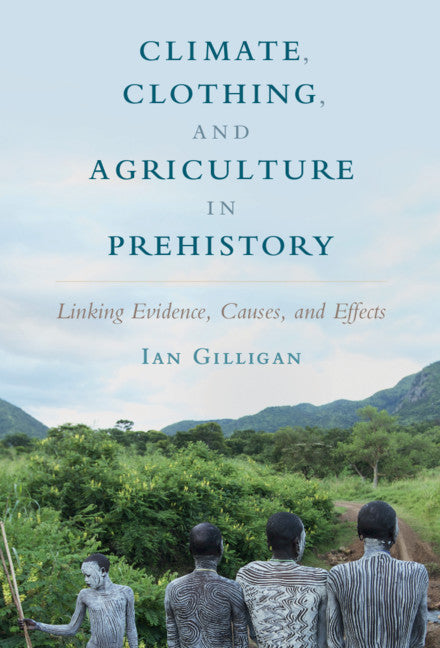Freshly Printed - allow 4 days lead
Couldn't load pickup availability
Climate, Clothing, and Agriculture in Prehistory
Linking Evidence, Causes, and Effects
The first book on the origin of clothes shows why climate change was crucial - for the origin of agriculture too.
Ian Gilligan (Author)
9781108470087, Cambridge University Press
Hardback, published 13 December 2018
344 pages, 95 b/w illus. 5 maps 9 tables
26.1 x 18.3 x 2.3 cm, 0.78 kg
Clothing was crucial in human evolution, and having to cope with climate change was as true in prehistory as it is today. In Climate, Clothing, and Agriculture in Prehistory, Ian Gilligan offers the first complete account of the development of clothing as a response to cold exposure during the ice ages. He explores how and when clothes were invented, noting that the thermal motive alone is tenable in view of the naked condition of humans. His account shows that there is considerably more archaeological evidence for palaeolithic clothes than is generally appreciated. Moreover, Gilligan posits, clothing played a leading role in major technological innovations. He demonstrates that fibre production and the advent of woven fabrics, developed in response to global warming, were pivotal to the origins of agriculture. Drawing together evidence from many disciplines, Climate Clothing, and Agriculture in Prehistory is written in a clear and engaging style, and is illustrated with nearly 100 images.
Part I. Introduction: 1. What separates us from nature?
Part II. Clothing in the Ice Age: 2. Climate change and the invention of clothes
3. How clothes work to keep us warm
4. The technology of Palaeolithic clothes
5. Changing climates and early clothes
6. Decorated clothes and Palaeolithic art
7. Neanderthals and Tasmanians
8. The value of making clothes visible
Part III. Global Warming and Agriculture: 9. Time for new clothes
10. A half-baked revolution
11. Agriculture and textiles in Eurasia
12. Agriculture and textiles in the Americas
13. Agriculture from Africa to Australia
Part IV. Feeding the Multitude: 14. A really revolutionary revolution
15. Covering breasts and making more babies
Part V. Sedentism and Domestication: 16. Some loose ends
17. Enclosure and fabrication
Appendix.
Subject Areas: Archaeological science, methodology & techniques [HDW], Environmental archaeology [HDP], Prehistoric archaeology [HDDA], Archaeological theory [HDA]


